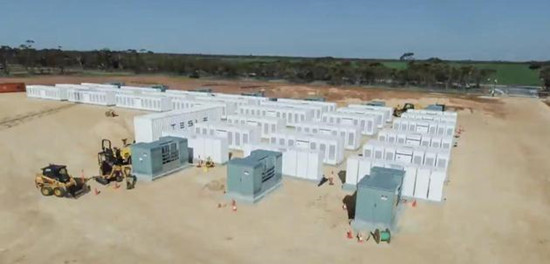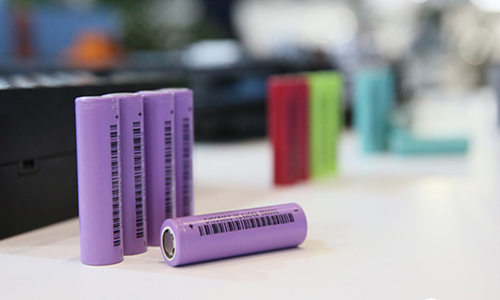Lithium Polymer Motorcycle Battery - Jump-starting and Buying
Mar 06, 2020 Pageview:1353
Lithium polymer (LiPo) batteries are commonly used in small devices such as smartphones, power tools, household appliances, and even electric cars. The technology behind them has matured to the point that they can now be used safely in motorcycles.
LiPo cells are loosely classified as dry cell batteries alongside zinc-carbon and mercury cells. However, they are more reliable and long-lasting than the lead-acid batteries still common in motorcycles.
This piece is a comprehensive guide to help you choose the best lithium-polymer battery for your motorcycle. It will also explain how you can jumpstart it on the rare occasion that it goes flat.
1.Are lithium polymer batteries Better for Motorcycles?
Yes, in every way. The technology behind LiPo batteries allows for better starting, better charge retention, longer service life, and more returns for your money.
Starting Power
The most important thing to consider in a motorcycle battery is obviously the cranking or starting power. A battery needs to turn the crank fast enough to get the engine going, and this is usually measured in Cold Cranking Amps or CCAs.
In lead-acid batteries, CCAs are measured over a 30-second period. In reality, it takes less than 10 seconds to start an engine if done right.
LiPo batteries have very little internal resistance, and thus provide a very high voltage to bring your engine to life. The power supplied by a LiPo battery over the starting time needed is measured in Pulse Cranking Amps or PCAs.
Cost Over Time
The second most important feature to consider for most people is the cost. LiPo batteries are expensive. They are even more so when purchased together with a mains charger, which can easily double the value of the cell.
However, what you need to look at here is the effective lifetime of a LiPo battery. With proper care, it can last ten years or more quite quickly, whereas over 37% of lead-acid batteries typically fail within the first three years. In comparison, only about 2% of LiPo batteries fail in a similar period.
Safety of LiPo Batteries on a Motorcycle
The third, and probably most important point that still causes some reservations, is safety. Are lithium polymer batteries safe for use in a motorcycle?
The answer is yes, they are. Given that they are dry cells, you can install them in any configuration. A good model by a reputable manufacturer will also have passed numerous tests in every condition. Manufacturers operate under stringent rules regarding safety.
Modern LiPo batteries have two major safety features involved. The most important is the Battery Management System (BMS). This is a piece of a circuit with inbuilt software to control the charging and discharging of the battery. That alone eliminates 90% of safety issues.
The other important feature is an internal fuse. The fuse acts just like a normal one, but it cannot be bypassed by people who have less regard for safety. It prevents overcharging and excessive discharge currents.
Other design features also include proper cell separation, using cells of lower energy density, adequate packaging, among others.
2.Can You Jumpstart A Lithium Polymer Motorcycle Battery?
Lithium polymer batteries can be jumpstarted easily in a variety of ways. However, 'jumpstarting' in this case can have different meanings, so to understand what we're talking about, we need to first consider why a LiPo battery would need it.
Typically, a LiPo battery only loses 3% of its charge every month, which is a very low rate by modern standards. It means that the battery can go for months without going flat.
However, you may have components like an LCD, heated handlebars, GPS, among others that draw charge even when the key is turned off, depending on their wiring. In this case, it is possible to have the battery discharge to a point where it will no longer start, or even charge.
The BMS system is responsible for most flat batteries. It disconnects the charging circuit when the charge capacity goes below a certain rate or puts the battery in 'sleep mode.'
A LiPo battery should not go lower than 1.2V per cell; otherwise, it would brick (become so flat it cannot be recharged).
Also, at very low temperatures, the copper terminals within the battery start to dissolve in the electrolyte. When recharged, the copper reconstitutes but can cause short circuits and even explosions while doing so.
Thus, the BMS system turns off the discharge functions, and may even turn off normal charging until it is ‘boosted’ for a while. However, it is easy to ‘wake up’ the battery and charge it normally.
With this in mind, if your battery has not been below nominal charge for more than a week, you can jumpstart it in either of the following ways:
●Connect it to a similar size and capacity battery with wires; +Ve to +Ve and -Veto -Ve. Let it settle for an average of 10 to 15 minutes, then charge it with a mains charger.
●If it is not below nominal charge capacity, use the appropriate mains charger to boost it to a voltage that can crank your bike.
In storage, it is advisable to periodically recharge the battery by taking a short 5-minute ride around. You can also use the mains charger to keep it juiced.
Note that even if you have a Kickstarter, if the battery is drained too low, you might actually damage it with the bike alternator. So, first, make sure that the battery is ready to charge by checking that the charge level is above nominal.
3.How Do You Buy A Lithium Polymer Motorcycle Battery With Good Quality?
Now that you know the merits and demerits of a LiPo battery, you should be able to see that they are a clear winner over lead-acid batteries. Despite that, there are still some considerations you need to think about.
●Manufacturer - the manufacturer of your lithium polymer battery, maybe the most important consideration. Make sure you buy one from a reputable company with proper safety testing. Some cut corners to save on cost, and thus compromise on safety. This is one case where you shouldn't be too shy to spend more to get higher quality.
●BMS: The battery management system is what keeps your battery safe and ensures long life. Some batteries from questionable manufacturers don't have them, and if you find one without it, stay away!
●Internal fuse - While it is not as important as the BMS, it is still a good point to consider.
Final Words
Lithium polymer batteries are perfect for your motorcycle if you want more reliability, better performance, and a general sense of 'fit and forget.'
However, you need to learn a few things about them to make sure that you know exactly what you’re buying. A proper LiPo battery will make sure that you no longer have to do futile kick starts on cold mornings!
Leave Message
Hottest Categories
-
Hottest Industry News
-
Latest Industry News














